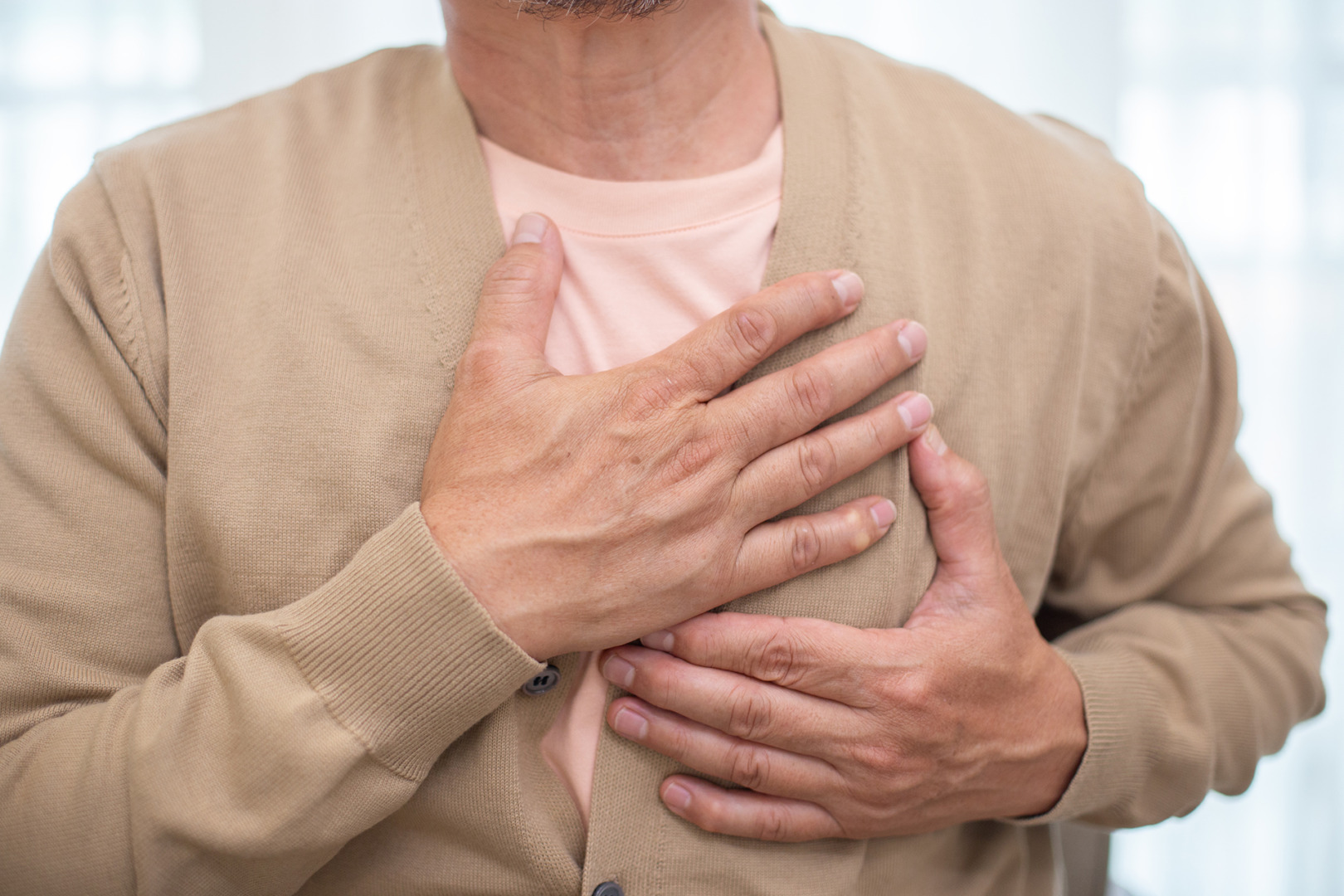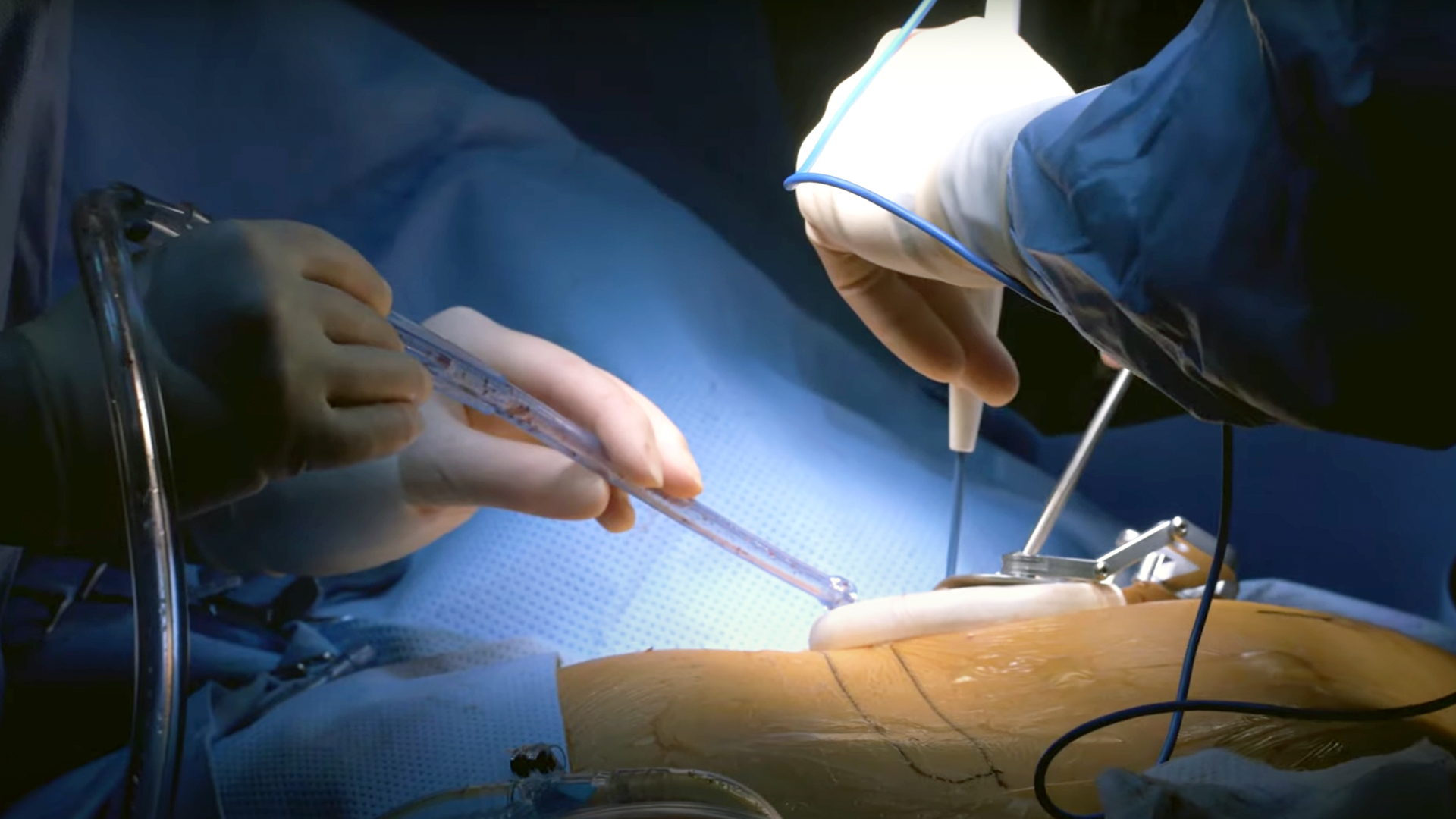
Uniportal video-assisted thoracic surgery (U-VATS) is a minimally invasive surgical technique that involves accessing the thoracic cavity through a single incision.
In U-VATS, a small incision is made between the ribs, which serves as a port for both traditional surgical instruments and a thoracoscope, a device equipped with a fibre-optic video camera. This allows the surgeon to visualise the pleural cavity and perform procedures such as biopsies, resections, and chest wall reconstructions through the single incision rather than the traditional method of opening the chest wall through a sternotomy or thoracotomy.
U-VATS offers potential benefits such as reduced complications and improved recovery time compared to traditional thoracic surgery techniques.

Uniportal video-assisted thoracoscopic surgery is utilised by Neumark surgeons for the treatment of various thoracic conditions, including:
The appropriateness of U-VATS as a treatment modality should be determined through consultation with the Neumark surgical team.

Uniportal video-assisted thoracic surgery is a minimally invasive surgical technique that has gained widespread adoption in recent years due to the numerous advantages it offers compared to traditional surgery.
U-VATS allows thoracic surgeons trained in the specialised technique, like Neumark’s Dr Harish Mithiran, to perform a variety of procedures, including biopsies and lung resections, making it an extremely viable alternative. One of the primary advantages is the reduction in surgical trauma. Traditional thoracic surgery involves making a large incision in the chest wall, which can result in significant pain, scarring, and prolonged recovery time. In contrast, U-VATS utilises a single, small incision between the ribs; this is less invasive and leads to less post-operative pain and discomfort.
U-VATS also offers improved visualisation of the surgical field compared to traditional techniques. The use of a thoracoscope, a device equipped with a fibre-optic video camera, allows Neumark’s surgeons to see inside the chest cavity in real time and perform the surgery with greater precision and accuracy. This can result in better outcomes and reduced risks of complications.
The use of U-VATS has been shown to result in reduced postoperative pain, shorter hospital stays and faster recovery times for patients.
The uniportal video-assisted thoracoscopic surgery procedure has been shown to be less invasive than traditional open thoracotomies, resulting in a faster postoperative recovery and shorter hospital stay. Minimally invasive thoracic surgeries, such as U-VATS, have also been shown to reduce postoperative pain and the risk of complications while maintaining equivalent surgical outcomes compared to open surgeries. In addition, the U-VATS procedure provides a cosmetic benefit in the form of a single, small scar.
Any invasive surgical procedure carries some inherent risks, such as bleeding and infection. It is important for patients to discuss the potential risks and benefits of U-VATS with a thoracic surgeon highly-skilled in U-VATS surgery at Neumark before making a treatment decision.
The cost of uniportal video-assisted thoracic surgery can vary depending on a number of factors, such as the specific type of surgery being performed and the patient’s overall health. However, the total hospital costs for U-VATS surgery in Singapore may be lower than open resection, for example. U-VATS is often associated with fewer complications and a shorter hospital stay, which may offset some of the additional surgical costs. It is also important to note that most insurance providers typically cover the cost of U-VATS.
In Singapore, insurance providers will typically cover the cost of U-VATS, but always check with your provider to determine their coverage for this type of surgery (see insurance panel list).
Minimally-invasive alternatives to uniportal video-assisted thoracic surgery include robotic-assisted thoracic surgery (RATS) or multi-port VATS. In cases where minimally invasive techniques are not suitable or possible, more traditional surgical approaches such as thoracotomy or sternotomy may be recommended.
The recovery time after U-VATS surgery may range from a few days to a week, depending on the complexity of the procedure and the patient’s overall health. It is important for patients to follow the instructions provided by their postoperative care team and to contact a healthcare provider if there are any concerns or questions about the recovery process.
Uniportal VATS involves a single incision and long, thin instruments with a camera, while robotic-assisted thoracic surgery uses a surgical robot controlled by a surgeon, equipped with instruments and a camera inserted through small incisions. Both techniques offer minimally-invasive surgery benefits such as smaller incisions and faster recovery compared to open surgery. The specific technique used depends on the patient’s needs and the condition being treated.
DISCLAIMER: The information provided on this website is for general informational purposes only and is not intended as a substitute for professional medical advice, diagnosis, or treatment. The use of this website does not create a doctor-patient relationship and no medical advice should be inferred or assumed. It is the user’s sole responsibility to seek the advice of their healthcare professionals for any medical concerns they may have and the user should not disregard, or delay, prompt medical advice for any such condition.
Read our latest insights on lung diseases and chest conditions, including prevention tactics, treatments, and more.
Gleneagles Medical Centre
6 Napier Road
#02-09 Gleneagles Medical Centre
Singapore 258499
Mount Alvernia Hospital
820 Thomson Road
#06-07 Medical Centre A
Singapore 574623